Defined by its characteristic numbing spiciness, the food of Sichuan and neighboring city-province Chongqing is not for the faint-hearted. It reflects the Sichuanese people’s fiery-tempered, no-nonsense, passionate reputation. When I lived in this southwestern province bordering Tibet, I sometimes wondered if the locals ever ate non-spicy food at all!
Here you’ll discover how Sichuanese food came about, how to make some of the most famous and addictive Sichuan dishes, and how this world-class cuisine has ignited a gastronomic revolution.
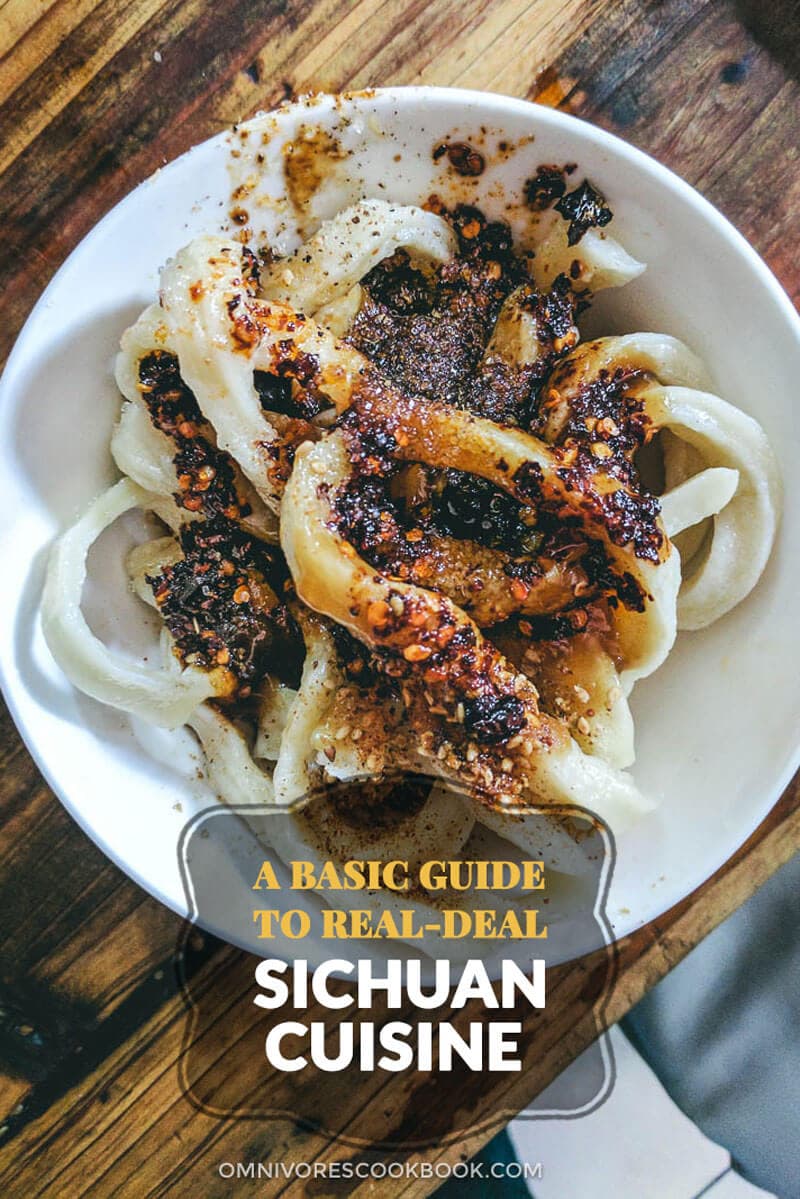
Background
The saying goes that ‘the Sichuanese do not fear spicy food’ (四川人不怕辣, Sìchuān rén bù pà là). And why would they? Fragrant, strong flavors have been the foundations of the region’s cuisine since Sichuan peppercorn blazed onto the food scene two millennia ago! Producing a unique tingling flavor, the ‘flower peppercorn’ (花椒, huā jiāo) is native to the region and the very essence and heart of Sichuan food – 麻辣 má là (numbing spice).
Although the Sichuanese have always had a zeal for the zing of má là (and là mèizi 辣妹子 – ‘spicy girls’), it wasn’t until the 16th century that Sichuan cuisine really got scorching. The story of how hot spicy peppers reached Sichuan is still a mystery, but a fascinating one. Ever since, Sichuanese chefs have fervently embraced the capsicum, coupling it with huā jiāo in virtually every dish – a marriage of piquant perfection.
Traditionally, Sichuan food is enjoyed around a big, yin-yang shaped hotpot, with plenty of choose-your-own ingredients and good, fiery company. The same flavors can be experienced in different dishes shared by the family at home. Sichuan also has one of the best street food scenes in China, so you can even get tongue-tingles on the go.
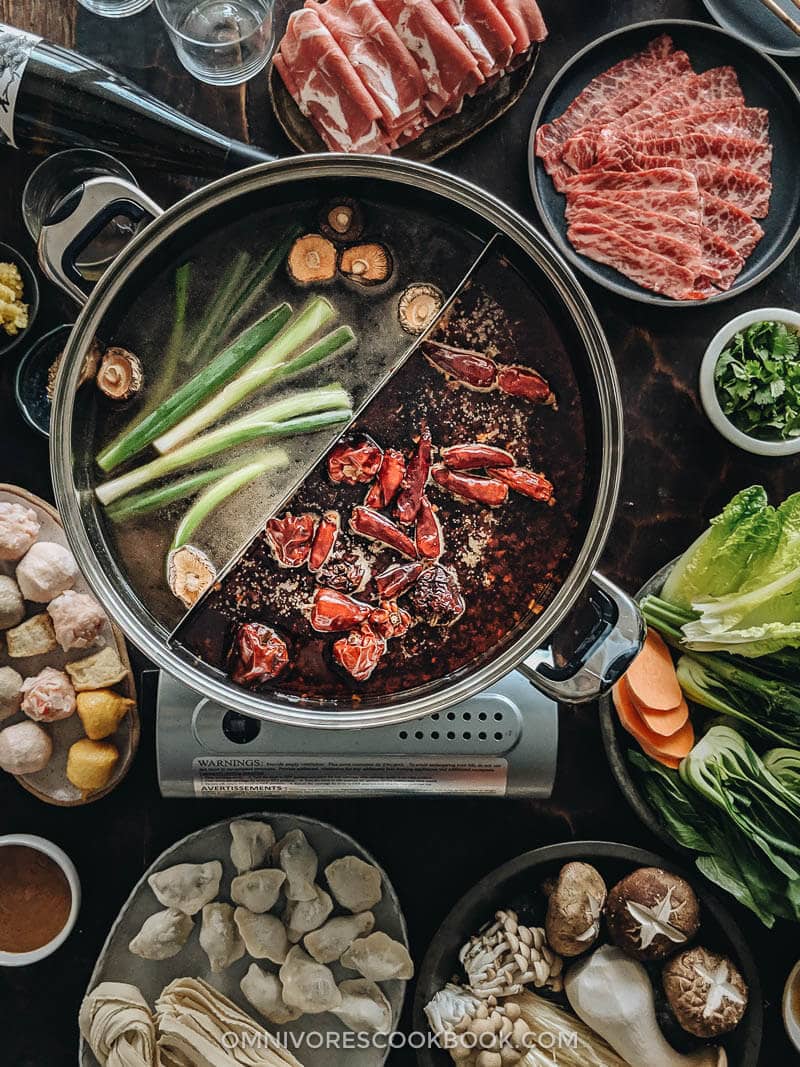
A gorgeous spice blend of trademark flavors appears time and again in most recipes. Sichuan peppercorns (Huā jiāo), dried chilis, chili oil, chili flakes, garlic, ginger, fermented spicy bean paste (dòu bàn jiàng), fermented black bean paste (dòu chǐ), peanut and sesame make up the Gang of Fire. Sometimes you’ll also get cilantro, scallions, pickled chilis, mustard greens, and star anise joining the party.
To counteract the year-round humid, soggy weather, the Sichuanese have spiked their diet with these ‘warming’ spices, which in traditional Chinese medicine (TCM) are believed to have cleansing and detoxifying effects. But the jury is still out on whether Sichuan cuisine is healthy in the conventional sense. Although some dishes include vegetables, by and large they do not skimp on the chili oil. For this reason, it’s an indulgence that may not sit right with your gut every day. But with food this good, who cares?
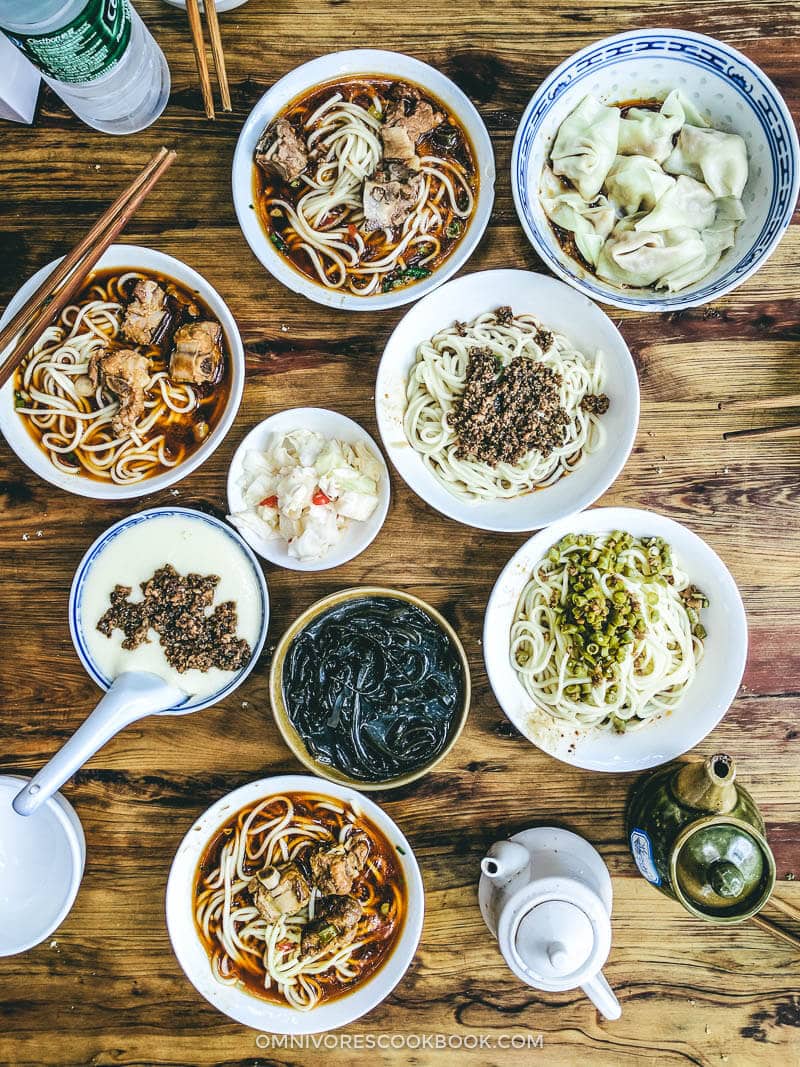
Sichuan Cuisine Favorites
If you haven’t already tried Sichuan food, and I mean real Sichuan food (McDonalds’s tragic ‘Szechuan Sauce’ does not count), these recipes are a sure-fire way to get you hooked. None of that trashy vanilla takeout!
Street Food Winners
There’s no one place to begin with Sichuan’s mind-blowing street food, but Chengdu, the capital, is a decent first stop. If you’re planning a visit, contact the fantastic Chengdu Food Tours for a trail-blazing tour of the best bites. Then get inspired by Sichuan’s Top 10 Street Foods before having a crack at some of these ‘small eats’ for yourself.
- Spicy Wontons in Red Oil – Serve with or without the spicy soup for an authentic hole-in-the-wall diner vibe
- Vegan Dan Dan Noodles / Dan Dan Noodles – A tribute to the street peddlers that sold them from baskets carried on their backs, their rich sauce is nutty, spicy and extra fragrant, with a hint of sweetness
- Pan Fried Peppers – Cooked until charred, the mild green peppers get a brutal black striped pattern that earns the dish the colloquial Chinese name ‘tiger skin peppers’
- Guo Kui (Scallion Pancakes) – Crispy, crunchy and flaky, the Sichuan version has an extra huā jiāo kick that bursts through the pastry layers
- Spicy Peanuts – Grab a handful, I dare you
Restaurant and Dinner Table Classics
No other province has such an extensive repertoire of famous dishes, which I’ve tried to cobble together here. Pick any number of these to festoon your table with an explosion of colors, textures, aromas and – of course – tastebud-assaulting flavors.
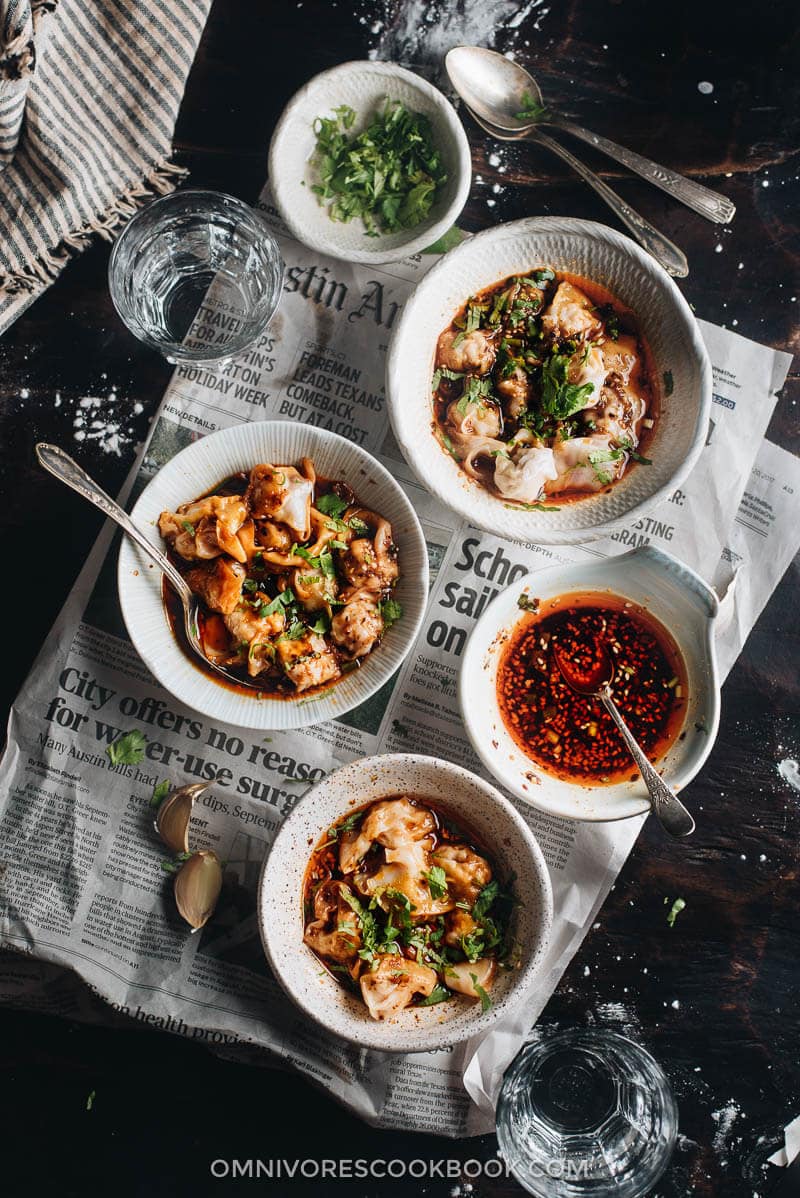
- Authentic Mapo Tofu / Vegetarian Mapo Tofu – Named after the freckled old lady who invented it, Mapo Tofu is the spokes-dish for Sichuan cuisine everywhere
- Eggplant Stir Fry / Grilled Eggplant with YuXiang Sauce – Slightly sweet and mostly spicy, eggplant is a Sichuanese favorite thanks to the way it soaks up sticky sauces
- Dry Fried Green Beans – Hands down the most addictive dish on the table. Don’t ask, just eat.
- Kung Pao Chicken – Kung Pao (宫保, gōng bǎo) is a bastion of Sichuan cuisine, yet so many places get it wrong. Do the original justice by following these steps. There is an easier version here.
- Chicken in Red Oil Sauce – The unfortunately named ‘saliva chicken’ will have guests salivating over the chicken. Just don’t tell people its real name
- Chicken with Spicy Sesame Sauce – Carefully poached with fresh herbs, then treated with an ice bath immediately after cooking, this chilled dish commands attention
- Mala Chicken – Smothered in chili peppers, Sichuan peppercorns and tons of aromatics to create an electrifyingly hot, numbing sensation
- Spicy Roast Fish – A Chongqing centrepiece garnished with aromatics for an eyeful of color and vibrant flavors
- Suan Cai Yu – Another, less spicy but no less delicious centrepiece fish with pickled mustard greens
- Twice-Cooked Pork (and Sauce) – An old special-occasions favorite for the family, so good it has to be cooked twice
- Beef Stir Fry – A tender, crispy beef dish cooked in a bold, sweet n’ sour spicy sauce with crunchy peppers and onions
- 4-Ingredient Crispy Beef – Dry-fried flavor bombs with minimal ingredients and prep time
- Spicy Shrimp Stir Fry – No small fry, it’s difficult to believe that such juicy prawns require only 15 minutes to get ready, including marinating time!
Hotpot
Once you’ve got the hang of Sichuan food, it’s time to have a hotpot party! See Maggie’s guide How to Throw a Hotpot Party at Home to host a fire-breathing feast for friends. 😈

Condiments
When you’re 100% addicted to Sichuan food (and trust me, you will be), you might want to make some of your own staple Sichuan condiments. The Mala Project’s Mala Market sources the freshest and best ingredients for these direct from China, including spices, dry goods, sauces and pickles.
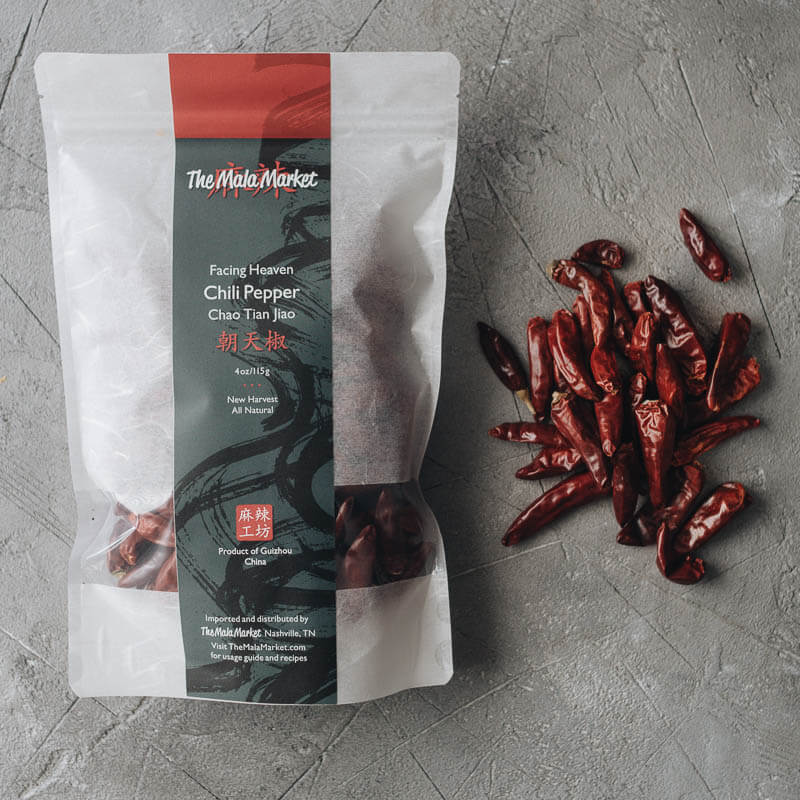
- Chili Oil – A how-to on the most vital ingredient to the region’s cuisine
- Homemade Black Bean Sauce – Salt up with fermented soybeans. Don’t forget to mix some of this up with chili oil for a DIY Lao Gan Ma (‘Godmother’ Black Bean & Chili Oil Sauce with a cute backstory)
- All-Purpose Chili Garlic Sauce – Exactly what it says on the jar, this is an all-round savior for instant Sichuan at home
- Homemade Kung Pao Sauce – Once you have this down, it’s ridiculously easy to whip up classics like Kung Pao Chicken and Kung Pao Shrimp, as well as the quirky Kung Pao Pastrami
- Sweet Soy Sauce – A key ingredient in a lot of appetizers, noodles and dumpling dishes, this is made with soy sauce, sugar, aromatics and spices for braising
- Spicy Fermented Bean Paste – Try and get hold of some Pi Xian dòu bàn jiàng for an assaulting umami-spice combo.
Eating Out
If you’re lucky enough to have a good Sichuan restaurant (or better still, a hotpot joint) near where you live, it’s a great place to find inspiration before bringing the fire to your kitchen. Legit hotpot restaurants will pour a brand-new bag of chili oil into the two-part cauldron in front of you. The pot is divided into a white, non-spicy (normally meat) broth and a spicy red chili broth with huā jiāo, and you select your raw ingredients before dunking them into the preferred section to cook for a few minutes. Meanwhile, have fun creating your own dipping sauce with a range of herbs and condiments (my favorite is the sesame paste). Then dig in! Eat with a bowl of rice on the side to dilute the spice hit if it’s too overwhelming, as well as peanut milk if available, which is a typical cooling drink. Sour plum juice (酸梅汤, suān méi tāng), Bing Fen 冰粉 and good old Tsingtao (Qingdao) beer work well too. If it’s a real shindig, you’d be doing everyone a favor by bringing out a good quality bottle of bái jiǔ (白酒 – grain liquor).
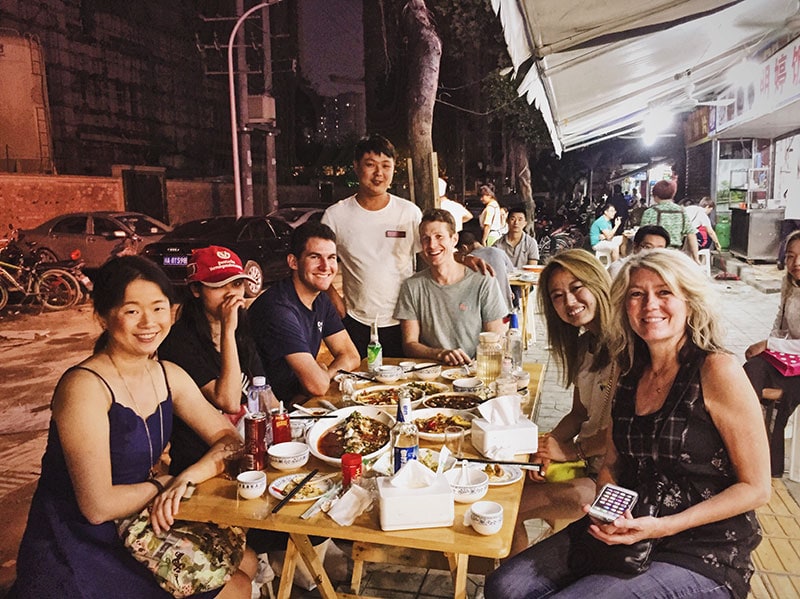
Admittedly, it’s impossible to ignore how messy Sichuan food can be to eat – chili oil splattering everywhere, sauces dripping on the table. But that’s the beauty of it – unpretentious, soul-warming food that makes you break a sweat and gets your nose dripping. Just let your inhibitions go up in flames.
[one_fifth]
[/one_fifth]
[four_fifth_last]
Meet Sally
Sally Jensen tried pretty much every weird food during her three years in China before it all got too much and she went vegan. Now she spends her time worrying about the planet here and sporadically tweeting here. All views her own.[/four_fifth_last]

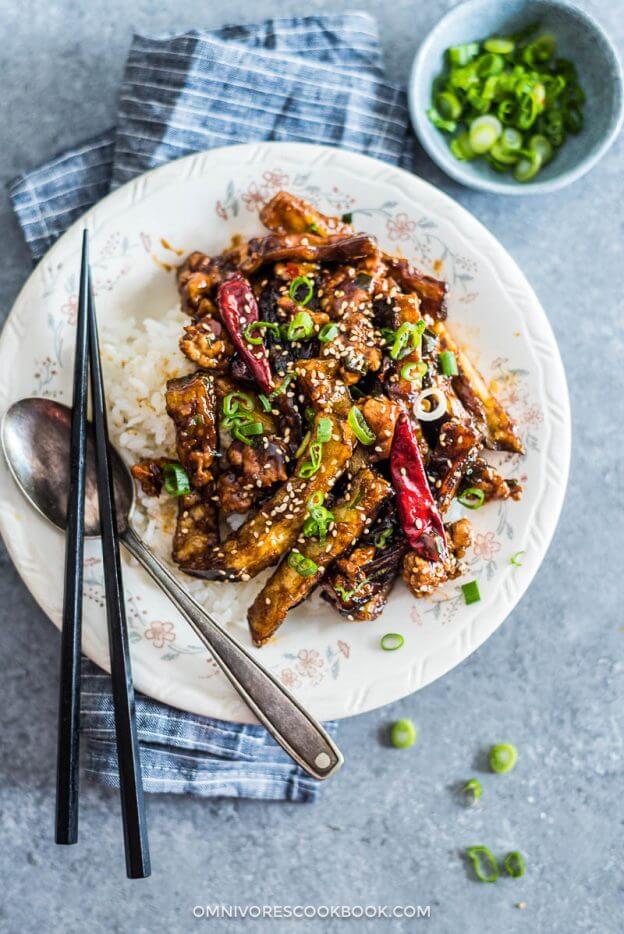
Terrance Galbo
I’ve read a few good stuff here. Certainly worth bookmarking for revisiting. I surprise how much effort you put to create such a wonderful informative site.
Cam McAlpine
Dear Maggie
Sichuan food is wonderful while I think Hunan food is overall spicier it lacks some of the complexity of Sichuan cuisine. But the hot pot is a great group activity.. I’ve been lucky enough to have lived in Shenzhen for over 10 years and visited most regions in China. Shenzhen is a melting pot city since it only 40 years old and the 1st. free economic zone in China. The one thing I have found is many Chinese people have very regional tastes in food. One of the 1st questions as a foreigner I would be asked by Chinese friends was if I liked Chinese food. My answer was always yes I like most Chinese food but not all. There response was always why not it is delicious. I would always ask which province they were from. If Guangdong I would ask do the like Hunan food always too spicy, same with Sichuan. Shandong food too salty too much garlic. Beijing food too much noodles. I response was then you don’t like Chinese food.
One food I would love to learn about and I have tried a number of times is to make that delicious soft pork jerky you can get in Macau. Hopefully you have a recipe that works. I enjoy your blog and I recently moved from a house with a electic stove to one with gas and a wok grill. I have recomended you web page to numerious people.
Hope you enjoy NYC.
Cam